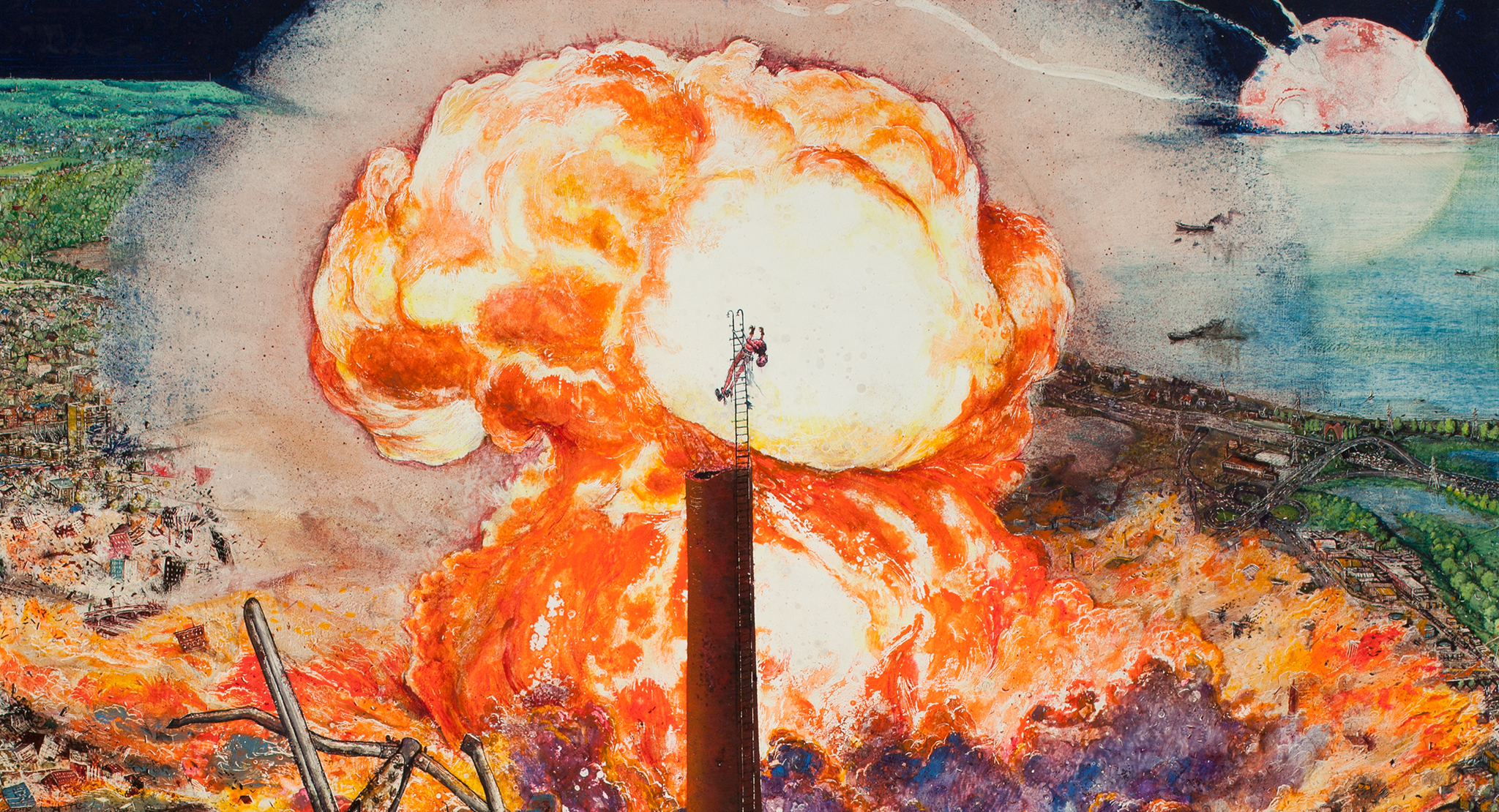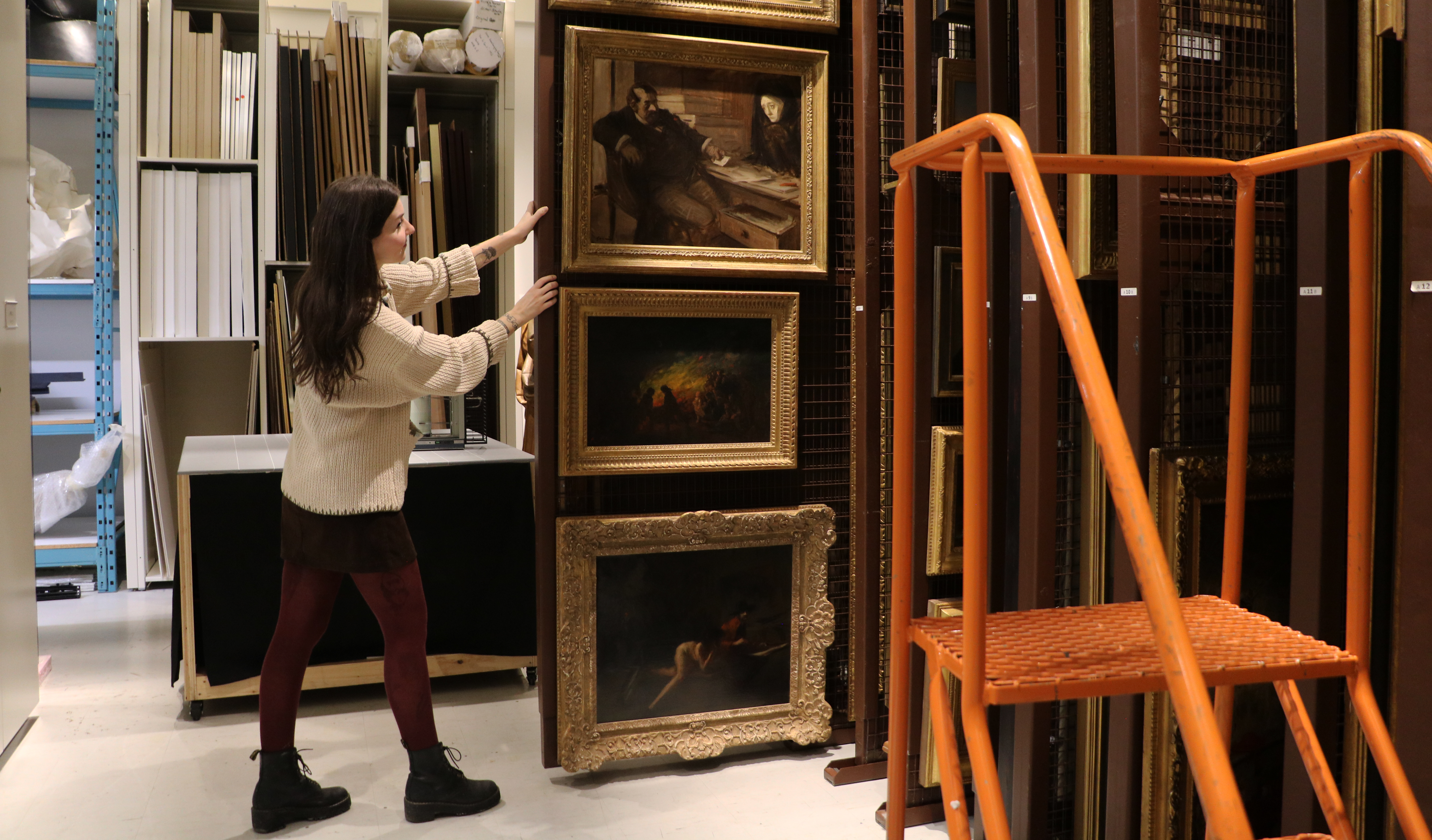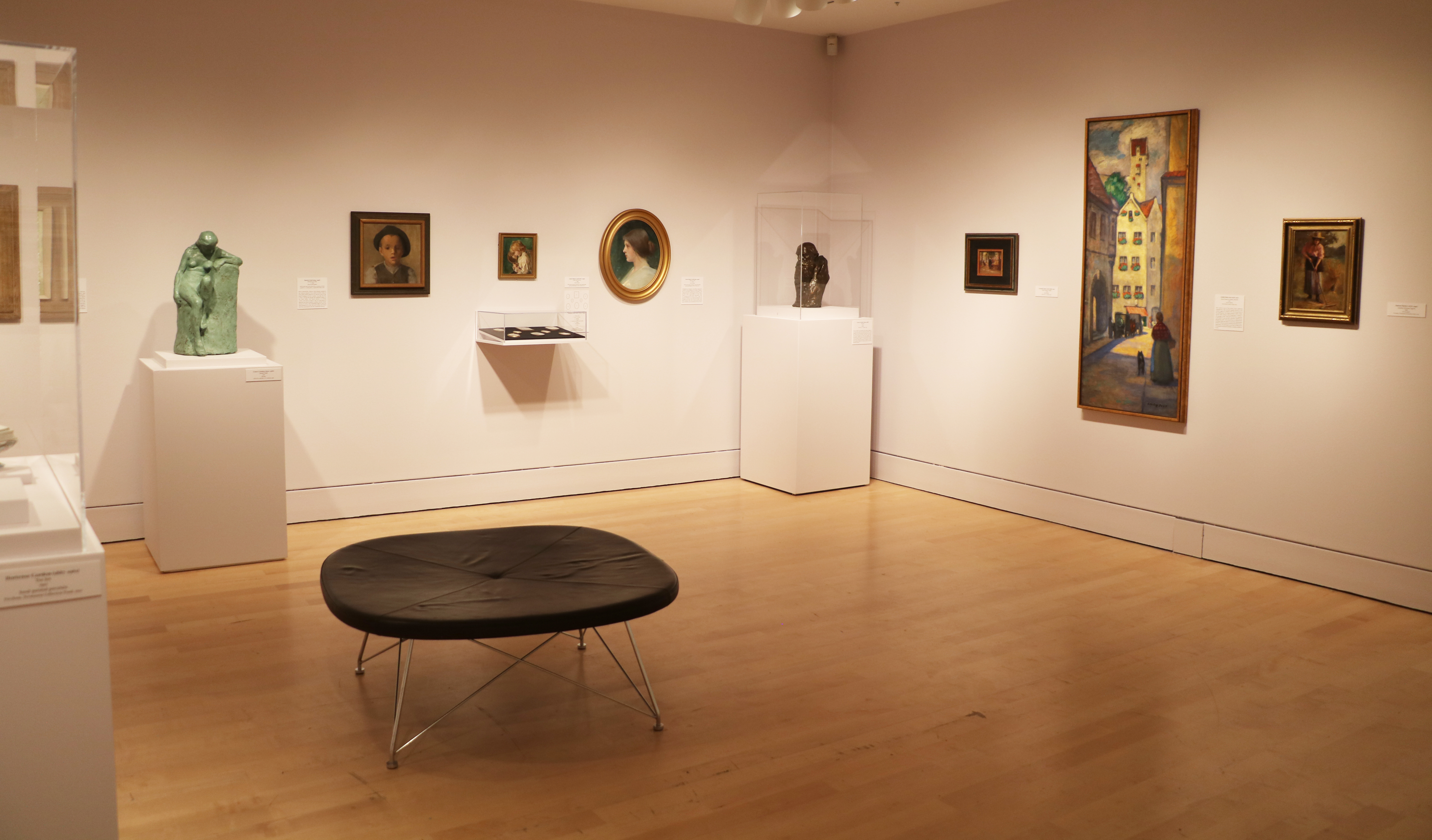Here at the AGH, we are very proud of the collection of artworks we are fortunate enough to hold in our care. From the over 10,000 pieces in our collection, we have selected a sampling to display in our exhibition, The Collection on Gallery Level 2, accessible and free to everyone!
Exploring a piece from this exhibition, today’s Collection Showcase looks at William Kurelek’s 1965 painting, This is the Nemesis, a staggering work of socio-religious satire foretelling the destruction of the city of Hamilton by a nuclear bomb.
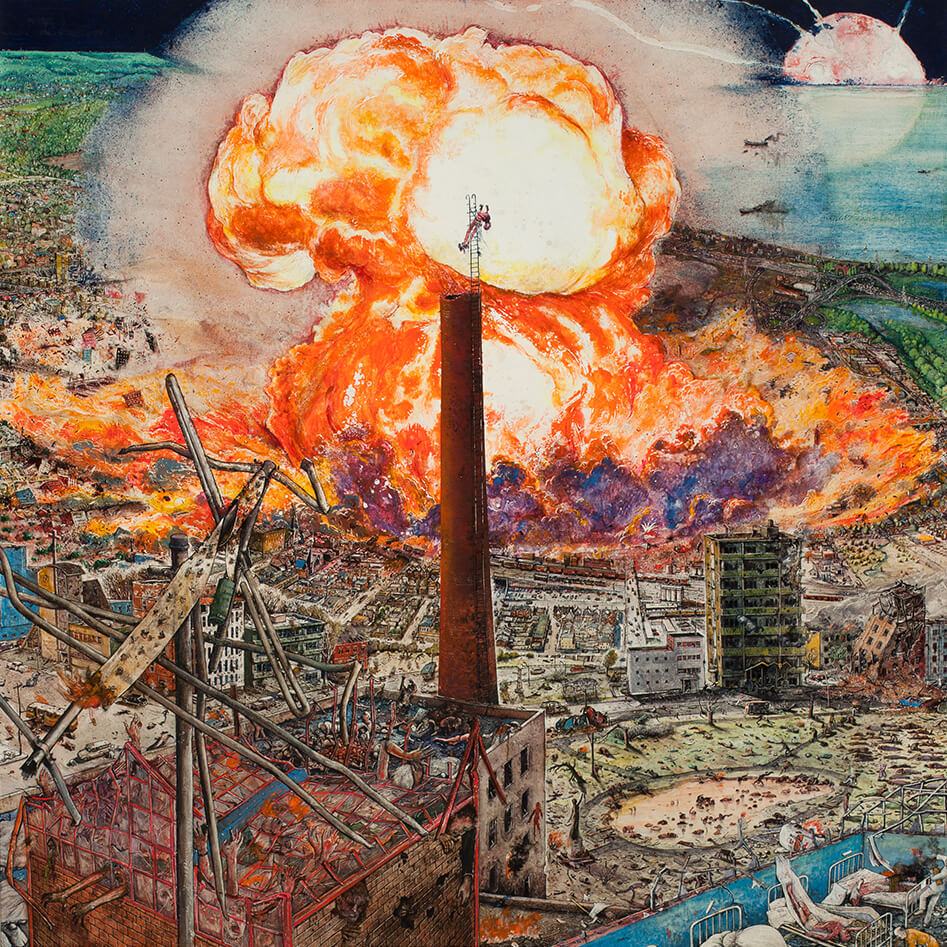
Throughout his career, William Kurelek focused his talents on exploring the battle between Canadian landscapes and the political forces he saw as physical threats to that environment. This is the Nemesis captures an explosive moment in this battle, informed by Kurelek’s development socially, religiously, and politically. While the artist often depicted Hamilton in his work, this painting approaches the city with iconic imagery of factory smokestacks set against the backdrop of a mushroom cloud. From Kurelek’s perspective, we witness the dark future he imagines for not only the man-made, steel-heavy landscape of Hamilton but Toronto exploding off in the background as well. Showing this work in 1966 Toronto, Kurelek’s audience observed the religious undertones at the heart of this piece, setting the artist apart from – what Winnipeg Gallery Art Curator Andrew Kear calls – the “largely secular art world” at the time.[1]
Painted seven years after his Roman Catholic conversion in 1957, this painting fits within the strongly-religious period of Kurelek’s life and career. Calling his conversion “the best thing that ever happened to me,” the painter’s worldview and artistic output shifted throughout the following years.[2] This painting, depicting an apocalyptic scene, features a body strung up high upon a ladder at the work’s centre, nearly crucified. Even the title, This is the Nemesis, references the work of Roman Catholic theologian Edward Holloway, who was similarly-apocalyptical in his message.[3] Though more extreme in execution, this piece also mirrors Kurelek’s 1964 painting, In the Autumn of Life (pictured below), a relatively calm image compared to This is the Nemesis. Described as merely “an unpleasant scene” by Kurelek himself, the painting likewise depicts an atomic bomb erupting over Hamilton, this time off in the background of the artist’s father’s farm 14 miles away.[4] Inspired to paint “a premonition of the disaster that will befall our materialistic society,” Kurelek clearly approached this same subject with far more intensity in This is the Nemesis.[5]
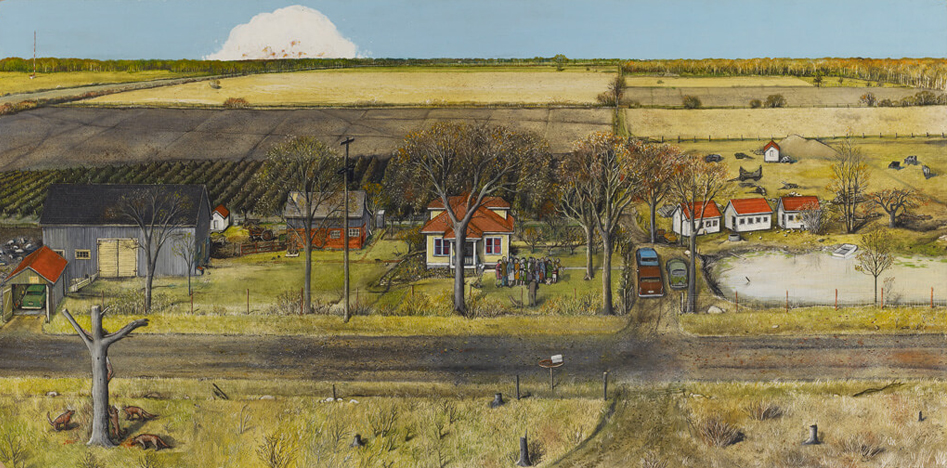
These attempts to communicate his religious and political concerns became a major concern for Kurelek, as he expressed his “genuine desire to share, backed up with a sense of urgency.”[6] More than that, he stressed visualizing his concerns as a duty, stating that he “can’t help but paint the sense of impending doom of our times.”[7] So, while the message of this work is certainly pessimistic, and the execution clearly chaotic, Kurelek’s This is the Nemesis also expresses the artist’s passion for preventing the world’s dark fate and the fulfillment of his duty in transferring such visions to paint.
[1]Andrew Kear, “This is the Nemesis,” William Kurelek, https://www.aci-iac.ca/art-books/william-kurelek/key-works/this-is-the-nemesis (accessed May 9, 2019)
[2]William Kurelek, Kurelek Country, (Boston, Houghton Mifflin Company, 1975)
[3]Andrew Kear, “This is the Nemesis,” William Kurelek, https://www.aci-iac.ca/art-books/william-kurelek/key-works/this-is-the-nemesis (accessed May 9, 2019)
[4]William Kurelek and Joan Murray, Kurelek’s Vision of Canada, (Edmonton: Hurtig Publishers Ltd., 1983)
[5]William Kurelek and Joan Murray, Kurelek’s Vision of Canada, (Edmonton: Hurtig Publishers Ltd., 1983)
[6]William Kurelek, Kurelek Country, (Boston, Houghton Mifflin Company, 1975)
[7]William Kurelek, Kurelek Country, (Boston, Houghton Mifflin Company, 1975)
